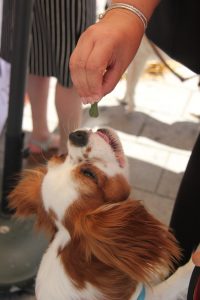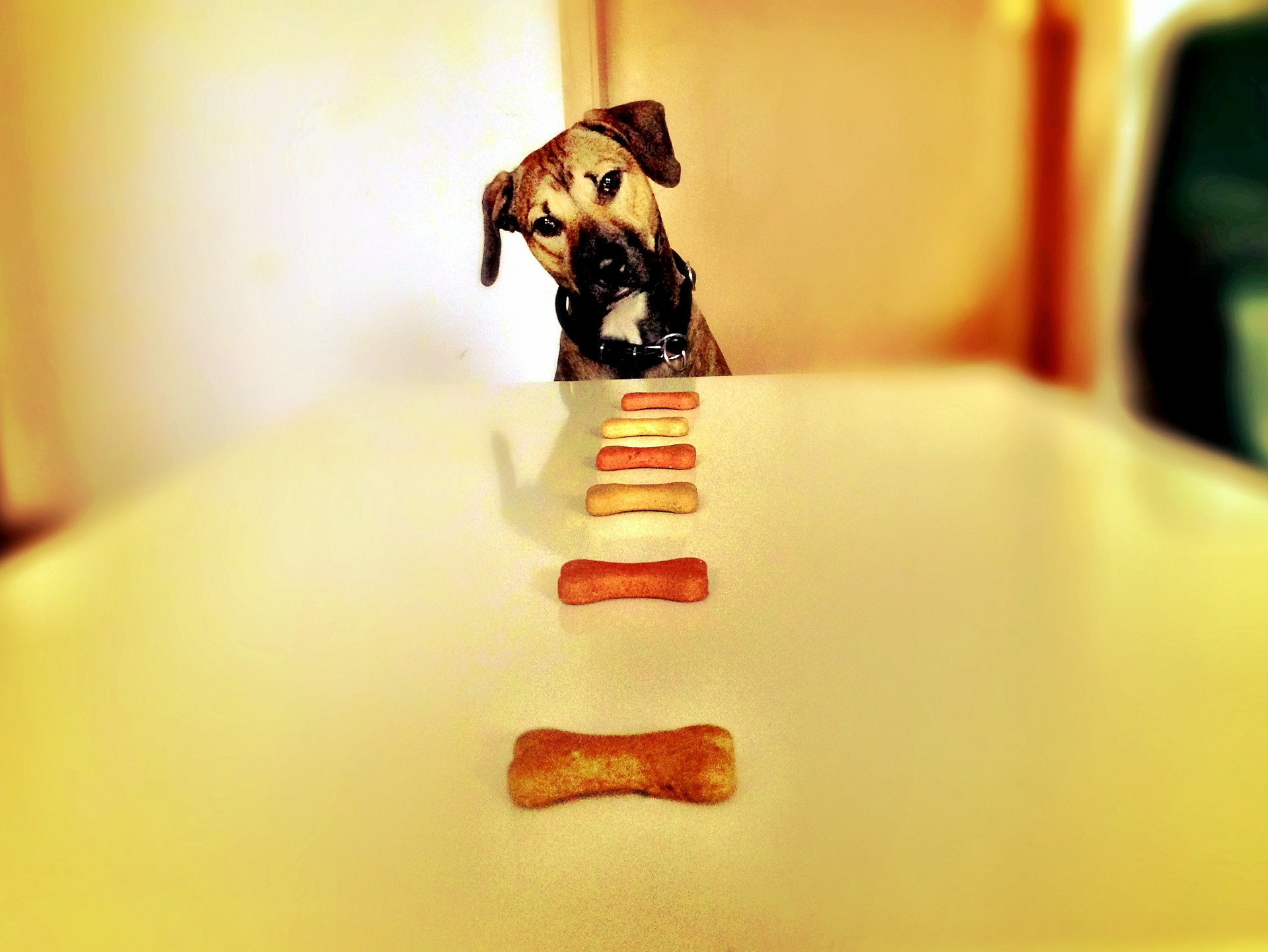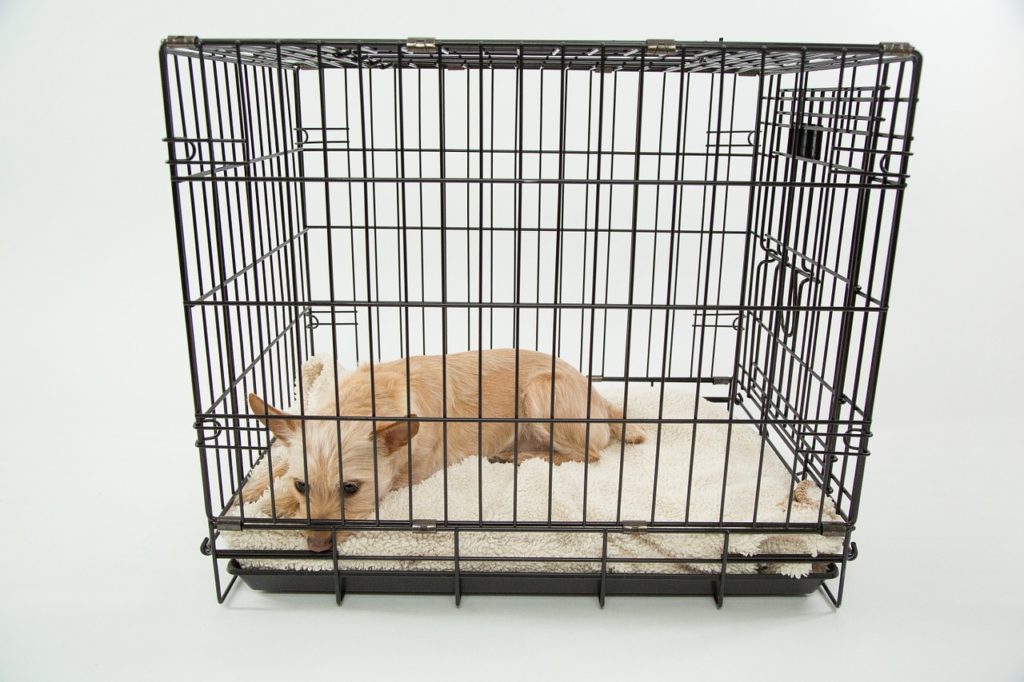5 Dog Training Tools Worth Owning

Image courtesy of JenReginer @ Pixabay
Training is an ongoing part of owning a dog, which is why it makes sense to invest in some quality dog training tools when you are first getting started.
Wondering what you would need?
Here are five dog training tools that will make your training journey so much easier:
1. A Clicker
When training a dog, no matter how old the dog may be, a clicker is one of the best dog training tools to have.
Never used a clicker before?
It's a small training tool that makes a clicking sound whenever you press it. The idea is that you press it each time your dog does something right. Marking the behavior with this distinct clicking sound helps a dog to learn so much faster.
Don't want to buy a clicker until you know for sure that it will be useful to you?
Try downloading a clicker app on your phone. This works in the same way, playing a clicking sound whenever you press the button.
2. High Value and Low Value Training Treats
Treats are usually an essential part of dog training, but it isn't quite as simple as grabbing any old bag of doggy biscuits.
Ideally, you should be using a mix of high value and low value training treats.
What's the difference?
High value treats are something that your dog really loves, be it cubes of cheese, dried liver, cooked chicken, or anything else. Low value treats would be items such as carrot slices, kibble, fruit, or any other treats that your dog likes, but is used to having on a regular basis.
The high value treats are what will really motivate your dog. However, it won't take long for your dog to get bored of them. This is where the low value treats come in. By mixing them up, you keep your dog guessing, keeping motivation high.
You can also use the high value treats to reward especially good behavior, and the low value treats for smaller accomplishments.
3. A Long Line
Recall training is something that so many owners struggle with.
Even if your dog has perfect recall now, this can often change for a number of reasons.
This is why it is always useful to have a long line in your bag of dog training tools.
What is a long line?
It's basically an extra long leash. It is lightweight but strong, and means that you will always have control over your pooch.
How long should your long line be?
They come in various lengths, ranging from 10 feet to 50 feet, with some even longer. 30 feet is usually enough for training.
A long line can be used for things other than recall too...
Owners find it useful to keep their dog on a long line when training their dog not to eat things when out on a walk, or when introducing their dog to new animals. It gives the dog a sense of freedom, while giving you full control.
4. A Crate
Some dog owners believe that a crate is cruel, but this couldn't be further from the truth.
Your dog's crate should be his safe place. It should be comfortable, and your dog should enjoy spending time in there.
It is so useful when training a dog, as it enables you to prevent a dog from misbehaving, while also helping with toilet training. A crate is helpful when traveling too.
Don't want to crate train because you think your dog will never need to use a crate?
You never know what could happen in the future...
If your dog were to get hurt in any way and end up at the vet, chances are that he will be placed in a crate. You want your dog to feel happy and secure in there, rather than scared and anxious, which is why crate training is a must for every dog.
Wondering how to crate train your dog?
Begin by feeding your dog his meals in his crate, along with special treats through the day. You can hide these treats in the crate at random times, encouraging your dog to explore the crate on his own. Make sure that you have plenty of comfortable bedding in the crate, and praise your dog every time he lies down in there himself.
It won't be long before your dog thinks of the crate as his safe haven, and will voluntarily spend time in there. You can then start closing the crate door, doing this for just a minute or so to begin with. Extend the amount you keep the door closed for, until your dog is happy to remain in the crate for a couple of hours.
5. A Whistle
While working dogs tend to be trained to a whistle, pet dogs are often not.
However, if you let your dog off the leash in open areas, a whistle can be so handy.
It enables you to call your dog back over long distances, when your voice simply wouldn't have been loud enough.
How do you train a dog to respond to a whistle?
Begin when your dog is near you. Blow the whistle and then immediately call your dog over. Give your dog a treat as soon as he comes to you.
Keep repeating this until your dog begins to associate the whistle with returning to you.
You can then increase the distance over which you call him with the whistle. Don't forget to also practice this in different locations. Dogs are contextual learners, meaning that they need to master a trick or command in a variety of places, with different distractions, before it is properly cemented in their heads.
There are so many different techniques and methods out there when it comes to dog training, but just about all of them will require the use of the above dog training tools. From clickers to mark positive behavior to a long line to reign in any negative behavior, these dog training tools are all worth investing in.






